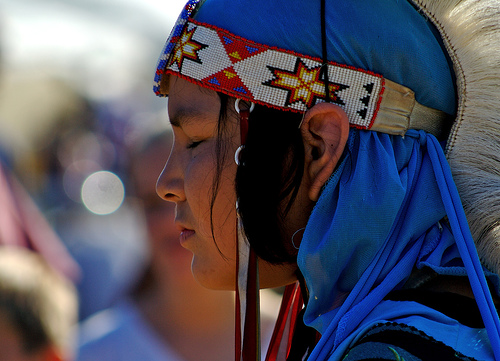
The Waccamaw Indians were a Siouan-speaking tribe, probably related to the so-called Cape Fear Indians, who populated parts of modern-day southeastern North Carolina. At the time of the first English settlement attempts in the late sixteenth century, the Waccamaw were among several small, autonomous tribal groups ("eastern Siouans") whose territory and hunting grounds extended from just south of the Neuse River down the coast to the lower Cape Fear and inland to Green Swamp and the junction of the Pee Dee and Waccamaw Rivers. They are thought to have been seminomadic river-dwellers who subsisted on hunting and some farming, often on high-ground "islands" within swamps. They lived in dome-shaped bark houses, practiced shamanism, and exhibited distinctive mortuary customs.
The Waccamaw's relationship with European settlers was based on trade (including guns and enslaved people), alliances, aid, and friendship, yet was all the while marred by European-borne disease, displacement due to European settlement, hostility, and outright warfare. The Tuscarora War (1711-13) and the Yamassee War (1715), in which the Waccamaw fought against the settlers, critically reduced the the tribe's numbers and strength and evidently resulted in their retreat to the isolated swamps near Lake Waccamaw for protection. Some settled with the Catawba, a Siouan tribe to the west. History records practically nothing of the Waccamaw through the remaining eighteenth century until 1790, when the U.S. Census recorded common Waccamaw surnames among inhabitants living in small, isolated communities.
In 1910 the Waccamaw's earliest known governmental body was created, the Council of the Wide Awake Indians, whose primary objective was twofold: to obtain public funding for Indian schools and, later, to attain federal recognition. The council's educational efforts resulted in the opening of the first publicly funded Waccamaw school in 1933, with more to follow; however, these Indian schools were notoriously ill-funded, fueling the council's campaign for federal recognition beginning around 1940. Ultimately the Indian-only schools were dissolved, along with segregation, in 1967. The first official use of the name "Waccamaw Siouan" (the third name officially adopted by the tribe since 1913) appeared in print in 1949, when a bill to grant the Waccamaw federal recognition was introduced in Congress. The bill was defeated the following year. Since then the tribe has focused its efforts on economic development and self-sufficiency. During the 1960s and 1970s, changes in federal policies regarding public funding and economic assistance allowed the Waccamaw and other tribal groups to benefit from several government programs without federal recognition.
Members of the modern-day Waccamaw Siouan tribe are concentrated near Lake Waccamaw in southeastern North Carolina. Most of the approximately 1,500 Waccamaws live in three major communities: Ricefield (Bladen County), Saint James (Columbus County), and Buckhead (straddling the Bladen-Columbus county line). Though not officially recognized by the federal government, they are one of the tribes recognized since 1971 by the North Carolina Commission of Indian Affairs (which Waccamaws and other tribal leaders helped to form the year before).They are closely related by religious denomination, politics, and, to a small degree, intermarriage (they are largely endogamous) to two other Indian groups, the Lumbee and Coharie. The Waccamaw are predominantly Christian and, among the Christians, overwhelmingly Baptist.
Tribal leadership is provided by the Waccamaw Siouan Development Association (WSDA), a nonprofit group founded in 1972. It consists of a nine-member board of directors, elected by secret ballot open to all tribal members over age 18, plus a chief, whose political role, beyond advising the board, is largely symbolic. In designing the WSDA as an agency for economic development, the Waccamaw pioneered a strategy for both self-determination and the articulation of their Indian identity that has achieved some substantial successes since 1978 and has been imitated by other unrecognized tribes in the state. Today most working Waccamaws are employed in the construction, forest and paper, and apparel industries. About 6 percent are full-time farmers. While the Waccamaw do not occupy a reservation, the WSDA owns a small tract as tribal land and a community building for governmental and ceremonial activities.
With community Indian schools eliminated and federal recognition dubious, the introduction of the powwow festival in the 1960s has become a central focus of Waccamaw activity. Held annually in October, the Waccamaw powwow resembles that of many other Indian groups around the nation and plays a central role in articulating Waccamaw identity.